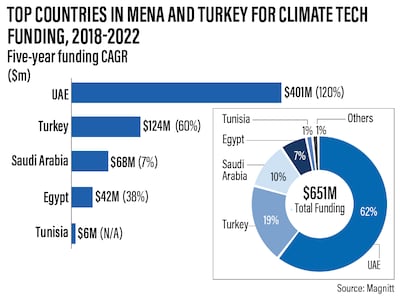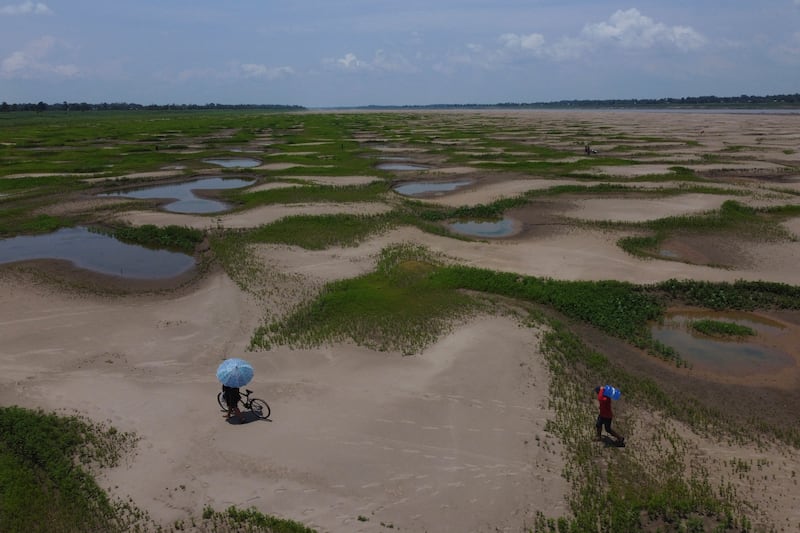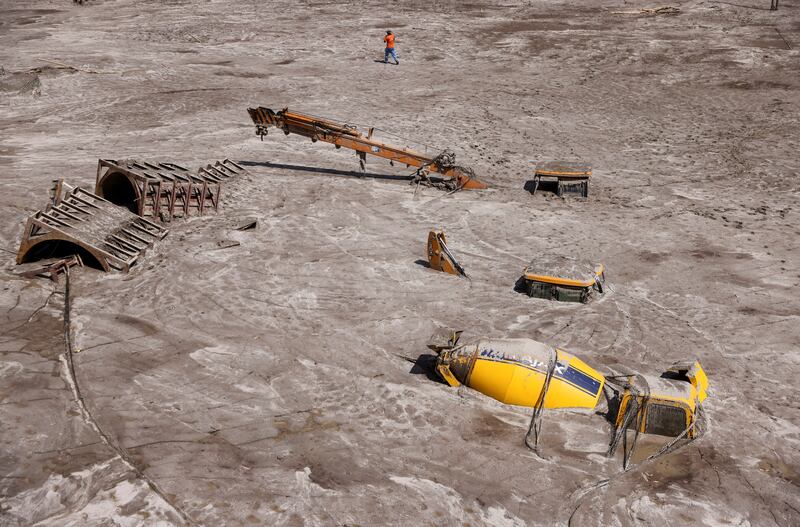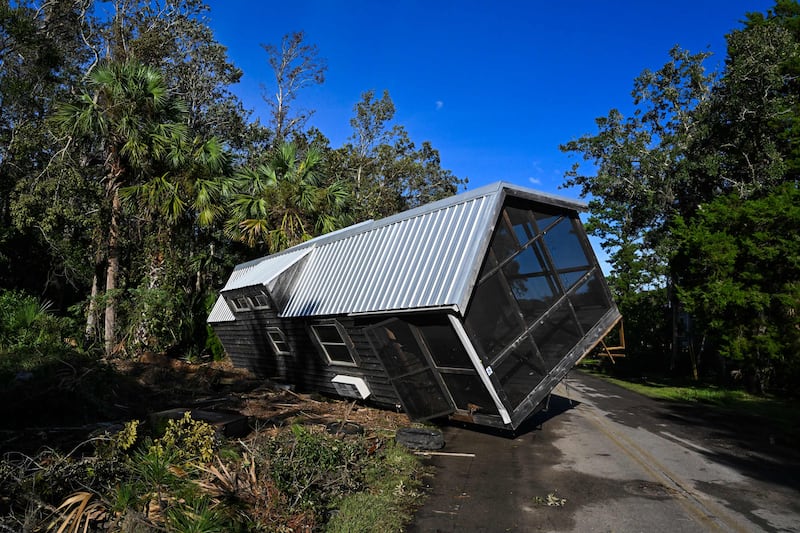Live updates: Follow the latest news on Cop28
Government negotiations and bad climate news dominated early Cop meetings, but there is now an increased acknowledgement that early stage climate technology innovators will play a crucial role in addressing climate challenges.
Many of these technologies are moving beyond the proof-of-concept stage, where they can be brought to scale – a costly and complex process.
For all the good these innovations can bring, the venture capitalists backing these climate tech companies see serious hurdles to overcome for investors, governments and the innovators themselves.
Private sector money has poured into climate over recent years, rising roughly 7 per cent annually. From the estimated $237 billion in private sector climate investment in 2015, the Climate Policy Institute estimates it reached $333 billion in 2020.
“Tailwinds are behind climate tech right now, with demand from consumers, businesses and governments,” says Christian Jolck, co-founder of London and Copenhagen-based venture fund 2150, which is focused on urban climate issues.
“Unfortunately, all the earth’s tipping points also show we are deeply behind addressing the issues and must act now to ensure protection for future generations.”
Innovators must prove their value
On the part of the innovators, venture capitalists see a need for greater commercial understanding, financial literacy, differentiation and proof of impact.
How black cardamom farmers in India are battling climate change

While more money is critical, the climate innovators themselves need to rise to the challenge of proving their value to the world, Zachary Bogue, co-founder of Palo Alto-based venture capital fund DCVC says.
By focusing more on their technology than its commercialisation, Mr Bogue says many climate innovators risk falling into the “Series B Valley of Death” where they struggle to raise funds beyond the early rounds.
“Groundbreaking technology that will change the world is not enough – how are you going to commercialise it at scale?” he asks.
“Closing your Series A at $5 million is great, but you need to plan your path for the next $500 million. Costs soar as you bring the technology into the world at scale, putting infrastructure in the ground.”
One reason funding goals fall short is a lack of financial literacy about the full range of options, says Roksana Ciurysek-Gedir, a former investment banker at JP Morgan, Merrill Lynch and the European Bank for Reconstruction and Development who now mobilises investment in climate action through Possible X, an investment initiative.
“I know many cases when the founders end up with capital that is not aligned to their stage or objectives.
“In failing to consider the full range of options available across debt, equity, investment funds and non-dilutive funding, the innovators sell themselves short.”
In addition, with so many companies entering climate tech, innovators need to ensure they stand apart from their rivals.
“With climate so much in vogue with investors and the market, I see many innovators failing to differentiate themselves,” says Ms Ciurysek-Gedir.
“From the perspective of impact investors – and also profit-focused investors – these innovators need to show why they are so different or they should just merge and work together.”
The classic climate innovator mistake is to make your solution way too complex and ignore the competitive landscape, Mr Jolck says.
“Everyone thinks they are unique and fail to demonstrate how they differ from the competition.”
Star performers in climate tech understand the problem, market and present a solution that is simple, scalable and already being tested in the real world.
Meanwhile, too many climate innovators also focus solely on the benefits they bring the planet, forgetting their actual customers, says Eric Archambeau, co-founder of Astanor Ventures.
“Just saying ‘we are good for the planet’ is not a business plan, particularly with agri-food products people eat,” he says. He adds that this was a mistake made by many first and second-generation meat replacement companies, who ignored taste and overused additives.
“Alternative proteins for fish, meat and dairy need a great smell, taste and texture as well as shedding the additives that made them less healthy than the real thing.”
But even the best climate innovators often struggle to quantify their impact, says Lena Thiede, founding partner at Planet A Ventures, a fund focused on European green technology start-ups.
“Many innovators overestimate their impact or fail to look at the whole ecological footprint. We cannot just throw money in the air to see what sticks – we need to understand which innovations will really move the needle,” she says.
From foundation, Planet A has built impact measurement into their investment model, with each portfolio company undergoing a full life-cycle assessment, which is presented on its website.
For instance, you can see how Sunhero, a Spanish rooftop solar firm, reduces carbon emissions, and how sensitive this calculation is to changes in assumptions about how electricity would otherwise be generated and managed.
Why investing in climate is different
As more investors put money into climate-centred solutions, a greater understanding is needed that software-speed time frames cannot be applied, Mr Archambeau says.
“If you are developing a biopesticide, you may need three seasons of data for approvals. These time frames need to be part of the investor’s calculations.”
To adapt finance to these longer time frames, climate ventures could be supported through established models from other sectors, such as project finance for infrastructure.
“Investing in climate is not like financing an e-commerce start-up,” says Mustapha Mokass, founder and chief executive of Climate Finance Group.
“These are large, expensive and risky investments that we need to find ways of accelerating.
“To encourage investment in a $100 million solar plant in Africa, for example, development finance institutions cover 10 per cent of the cost with guarantees from public money.
“Now let’s do the same for the VCs putting money in early stage innovators.”
Another option to encourage financing of climate innovators is to create hybrid public and private funds within the World Bank and other institutions to support early stage innovation, he says.
Biotech provides another great model for climate finance through the self-supporting ecosystem that evolved to provide clarity of stage and process, according to Mr Bogue.
“Similar to biotech, a great deal of climate tech is risky, expensive and has binary outcomes,” he says.
“Biotech has built a consistent and clear ecosystem that supports investors and companies as a promising molecule moves from the lab to the clinic and then on to public markets or sale into biopharma.”
Accelerating investor funds into climate tech will require biotech’s ecosystem-wide clarity of preceding and upcoming investment steps, Mr Bogue says.
Regulatory framework in focus
The already pivotal role of governments in relation to business becomes that much more crucial for early stage climate innovators, the venture capitalists said.
Climate challenges are global, but local regulations often inhibit innovation, says Mr Archambeau.
“Small companies with innovative, disruptive and high impact products face a regulatory maze incompatible with their time frame for funding.”
Companies producing insect-based protein, for example, initially faced regulatory hurdles in the European Union that included obligatory use of a limited number of authorised slaughterhouses.
“These regulations made sense for cattle, following mad cow disease,” Mr Archambeau says.
“But the logic did not hold for insect protein at scale. Imagine the additional overhead of taking each insect to an authorised slaughterhouse.”
Fortunately, the EU commission quickly corrected the policy when a newly formed syndicate of insect producers presented their case, Mr Archambeau says.
Governments have clearly shown other examples of how they can adapt to the urgency of climate issues, according to Mr Jolck.
“Germany’s accelerated renewable energy shift after the Russian invasion of Ukraine showed that governments can act quickly when they need to,” he says.
“Now governments need to bring that speed to addressing industries that have been around for centuries and help accelerate the approvals for new ways of doing things.”
Some governments have demonstrated adaptiveness to climate emergencies, according to Ms Ciurysek-Gedir.
“It truly is an art for governments to not stifle innovation, and the Middle East has studied that art very hard,” she says.
Arriving in Dubai during Covid-19, Ms Ciurysek-Gedir said she saw the combination of capital and speed of government adaptation attract many climate innovators.

“Perhaps some of the speed of adaptation by governments is about creating rules from scratch, but the accessibility to government is also remarkable.”
Having worked in the German government for more than a decade on development issues, Ms Thiede says the need and mandate for increased government participation in climate is clear.
“We need governments to play a greater role in shaping markets through bolder procurement of innovative green technology,” she says.
“If the German government decided to upgrade the specifications for heating systems for government buildings, for example, this would open the market.”
The choice by governments of what they fund also needs to evolve, says Mr Mokass.
“You can find many examples of major government support for the transition from dirty energy to clean. But there has not been enough focus on poor farmers, small island states and so many others who are being forced to adapt now,” he says.
As the impact of climate change takes hold, there is an increased urgency to deploy innovative solutions at scale.
Reaching that level of impact, however, will require fundamental changes in the way the innovators, investors and governments approach climate tech innovation.















